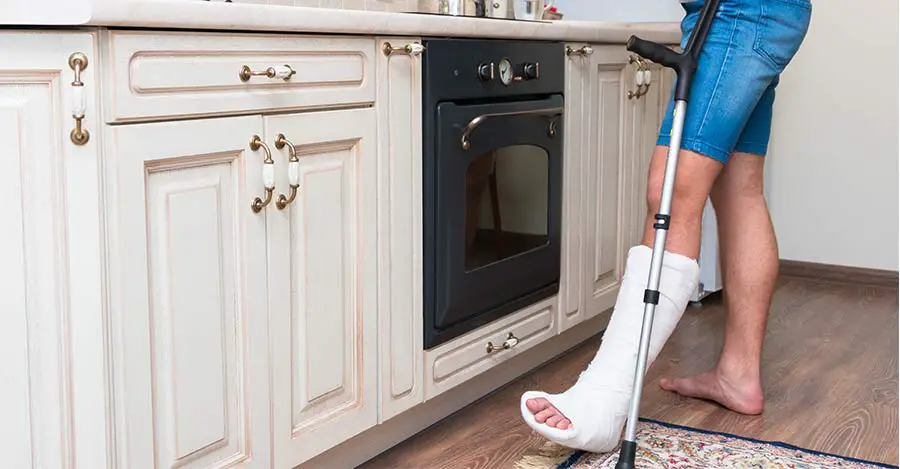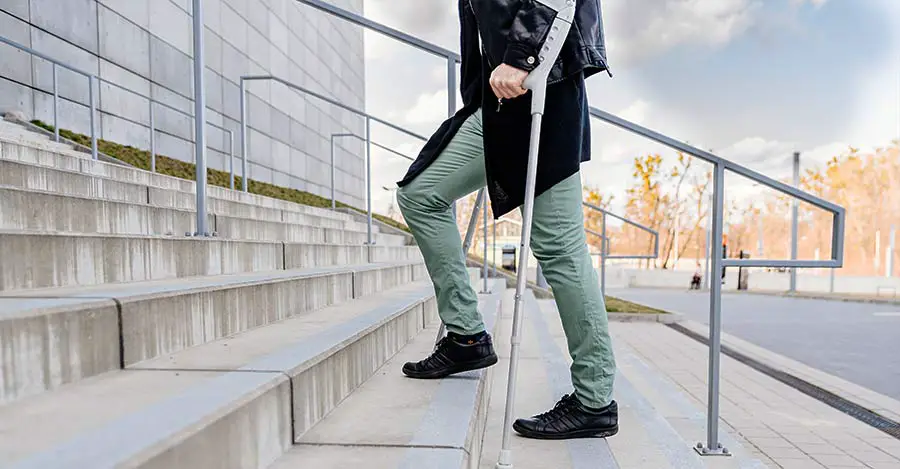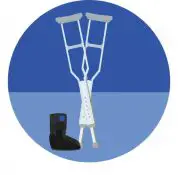10 Tips for crutches at school
- Last Update:
A leg injury may require you to start using a pair of crutches for movement. It may keep you from practicing your hobbies and daily activities. Getting used to crutches takes some time and practice, especially if you have to attend school.
Before you grab your backpack and head-on, there are some precautions you should take. Here are 10 tips on what you should do to prepare yourself for school while on crutches.
1. Talk to Your School Nurse
One of the first things you should do before you go to school with crutches, is tell your school nurse. Nurses are prepared to deal with patients dealing with different conditions. Giving your school nurse a heads-up about your condition can let them help you in case of in need.
Also, some schools may allow students who are on crutches to get out of class a bit early. The school nurse will inform the headmaster about your condition and may get you a pass to avoid the crowded hallways. Although this depends on your school’s policy, there is no harm to ask.
2.Learn and practice using a crutch at home

Using a crutch can be a little demanding at first. However, once you get the hang of it, it’ll be a smooth sail.
It is important that you practice using your crutches at home first, especially if it’s your first time. Learn the right way to take steps, how to sit down and get up and how to climb stairs. This will get you familiar with using crutches and prepare you to use them easily in school.
3. Get a Desk at the End of the Row
In class, it is beneficial that you take a seat at the end of the row, and preferably close the door. This will allow you to get in and out quickly, and also avoid disturbing your classmates. It also gives you more room to place your crutches next to you as you sit.
If you are going to attend a class in a lecture hall, ask your friend to save you a seat in case you arrive late. Lecture halls feature head speakers, so don’t worry about not being able to hear the teacher if you sit in the last row.
4. Use Your Backpack to Carry Books
Ask for permission to carry your backpack to class. Some schools may not allow students to carry their backpacks to class.
However, due to your condition, it will be very beneficial to carry your needs in your backpack. This will keep you from going back and forth to your locker, which may be tiring due to crutches. You can also carry your medicines in your backpack.
5. Have Your Friends Grab Your Lunch
During lunchtime, It would be difficult to stay in-line holding a lunch tray while on crutches. Ask one of your friends to grab your lunch. If not, you can also try packing your lunch and have it ready when you need it. This will save you the trouble of standing up and waiting for food, and keep you from wandering the cafeteria’s slippery floor.
6. Be Really Careful on Stairs

You may find yourself having to climb upstairs to get to your class or wherever you want to go. You must be very careful when going up or down stairs.
If you want to climb upstairs, proceed with your stronger leg, followed by your injured leg and your crutches. When you want to go down on stairs, place your crutches on the lower step and lean-on on them. Bring your injured leg down first, and then follow with your healthy one.
Remember not to rush yourself and be cautious with every step you take.
7. Have a Friend Help You:
You know the saying ‘’a friend in need, is a friend indeed’’. Having a friend to ease up the situation for you can be very helpful. Ask your friend for support when you are in need. A friend can help carry your bag, bring your lunch, and help you with stairs … etc.
Your friend can also ask permission from teachers to be your helping companion. This will allow him to help you before, during and after class, without getting into any trouble.
8. Let Your Teachers Know
It is important that you inform your teachers about your condition. Your teacher can assign you to a seat where you see fit. Your teacher can also allow you to leave a few minutes ahead or arrive a few minutes late.
This will allow you to take your time as you walk and avoid crowded hallways. If you have a gym session, inform your gym teacher that you can’t participate due to your injury.
9.Plan for Getting Around with Crutches at School
One of the best things you can do before you go to school is to plan your route. You may need to alter the way you usually take and instead choose an easier one.
Try to avoid uneven surfaces, and even though you can take stairs, try to find an alternative path. Planning the road you are going to take can be very helpful to save you time and effort.
10.Choose the right crutches
Choose the right crutches for you in keen to a smooth and easy experience. Pick a pair of crutches that are your right height and also feature some good quality tips, to avoid slipping. Make sure you adjust the crutches according to your need. For an optimum use, leave about two inches of space between the crutches and your armpit.
Final Word
Well-preparedfor going to school whenyou have to use crutches is important. Having to maneuver your way around different terrains and crowded hallways may not be that easy.
Therefore, it is essential that you follow our tips. Don’t rush yourself and remember to be cautious with every step you take. Also, update the school nurse and your teachers about your progress to receive the most help.
